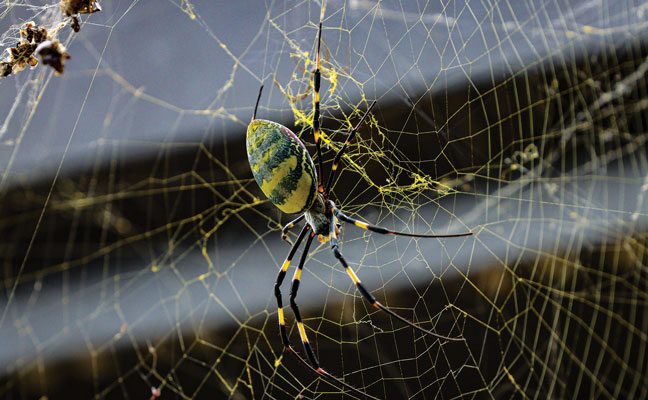As temperatures begin to drop, pest pressure remains and spiders are no exception. Because virtually all spiders are predators, an effective control strategy must focus on both direct spider control and the management of their prey.
As fall progresses, insect populations (a spider’s food source) are peaking but will begin to decline in many markets. When this happens, spiders tend to move to more favorable areas for both temperature and food—often, the same spaces we inhabit.
Key takeaways:
- Food is the Driver: Spider activity is directly linked to the availability of their insect prey. As prey populations move or decline in the fall, spider behavior changes.
- Not All Spiders Go Dormant: Some spiders enter diapause (a dormant state) as food becomes scarce. However, other species, like wolf spiders, may remain active, forcing them to search more aggressively for food, often indoors.
- Treat Both Pest and Prey: An effective fall strategy must target both the spiders themselves and the potential insect prey hiding in and around the structure.
Understanding spider diapause vs. active foraging
Not all spiders react to cooler weather in the same way. Some spiders enter diapause, a dormant state that aligns with reduced prey opportunities.
However, other species, such as wolf spiders (Lycosidae), may forgo diapause and remain active. This is why spider activity can persist late into the cool-weather season. These active spiders are still hunting and as their outdoor food sources disappear, they are more likely to move indoors, following their prey or seeking new hunting grounds in basements, garages and other sheltered areas.
Your fall control strategy

This predator-prey relationship means your fall spider control program must be a two-pronged attack. You need to stop both the spiders and the pests they feed on.
1. Target the spiders:
- Physical Removal: De-webbing and vacuuming are critical first steps.
- Targeted Treatment: Dust voids and treat known or potential entry points, focusing on areas where spiders are likely to seek shelter.
- Interior Hotspots: Focus on basements, walkout garages, foyers and utility lines where spiders may enter or overwinter.
2. Target the prey:
- Exterior Perimeter: Apply a residual liquid treatment to the exterior perimeter, paying close attention to the bottom row of siding, sheds and utility penetration lines.
- Harborage Treatment: Treat leaf litter and firewood storage areas, as these are prime harborages for the insects spiders feed on.
- Exclusion: Seal cracks and gaps where both spiders and their prey can enter.
By focusing on both direct spider control and the reduction of their insect food source, you can provide a much more comprehensive and effective service for your clients during the fall season.
Leave A Comment